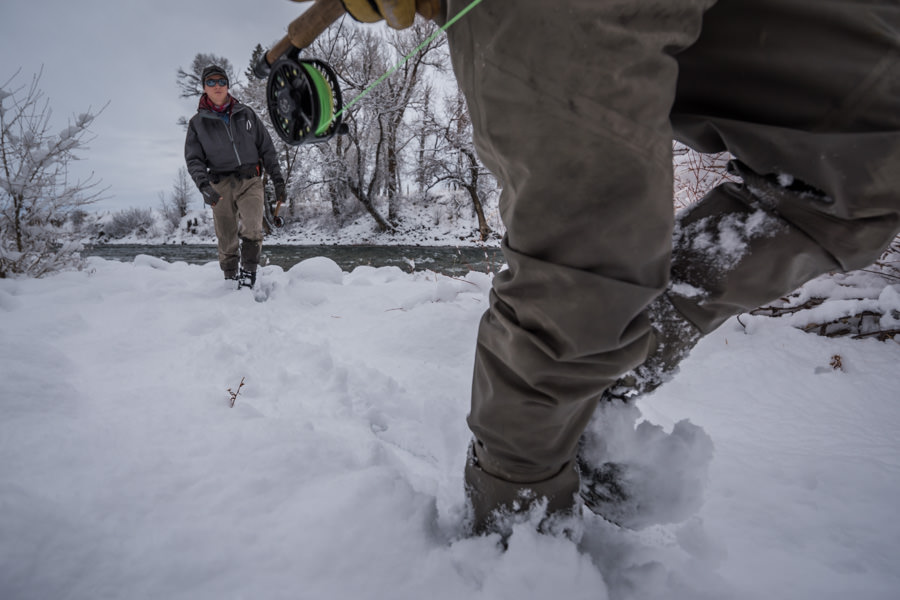
It could be windy out there, but, it could also be nice winter fishing weather. This is a good weekend to put up the skis and bring out the fishing rods. With warm temps on tap all weekend, expect some decent fishing. The Yellowstone River in early winter can be a great option to fly fish near Livingston and Bozeman, Montana. Because stream flows are the lowest of the entire year, walking-and-wading anglers have a lot of the river to fish--unlike other times of the year when anglers most often have to use a boat to get around and fish it effectively. The river can fish well in winter all the way from the boundary of Yellowstone National Park to Livingston and the river is still a good option closer to Gardiner but when the weather really gets cold, downstream of Livingston, the river develops a lot of ice shelves and becomes difficult to fish. Plan on fishing the after lunch hours with nymphing being the staple. Rubber legs trailed by a prince is as fancy as you need to get. The most important thing is to find a nice winter holding run with steady slow current and a few feet of depth.
The Month Ahead:
The ‘Stone will be a tough option once the big ice shelves begin to form and the slush is in the river. The best winter fishing tends to be up near Gardiner
Long Term Fishing Forecast:
The Yellowstone isn’t the best winter fishery. The Gallatin, Lower Madison and the spring creeks in Paradise Valley are usually a better choice once ice becomes a factor on this big freestone river.
Looking for More Great Content?
6 (PLUS ONE) Essential Flies for Fall Fishing in Montana
7 Best Tips for Walk and Wade Fishing in Montana
6 Great Tips for Fishing Hoppers, Ants, Beetles
Dry-Dropper Rigs: When to Use and When Not to Use
How to Rig and Fish a Dry-Dropper Set Up for Montana Fishing

